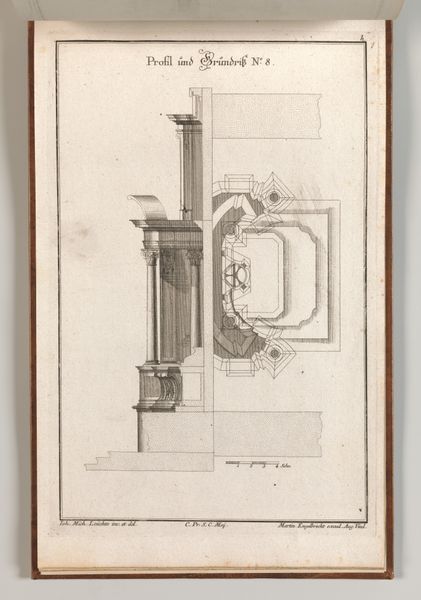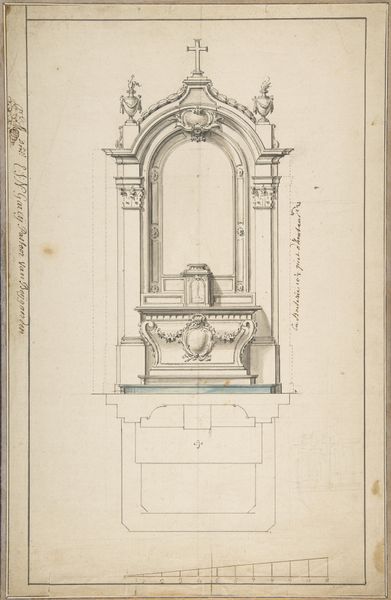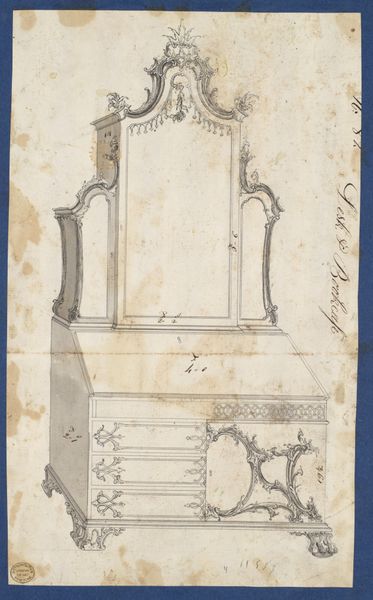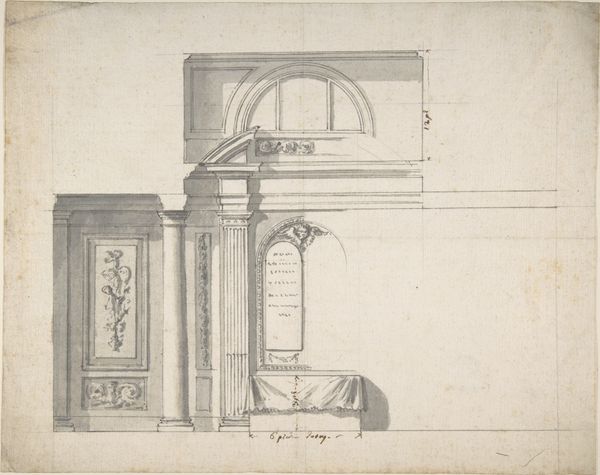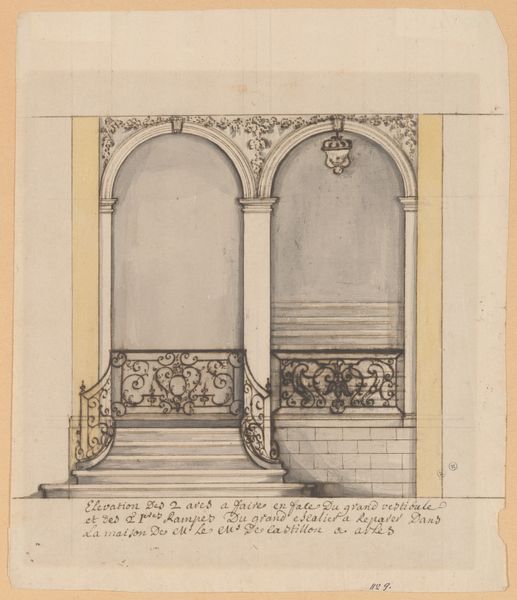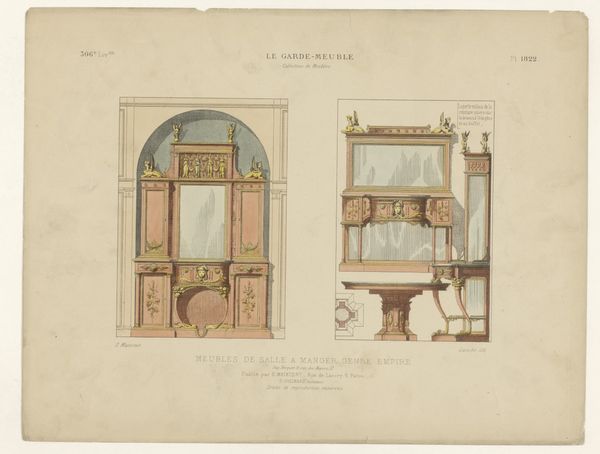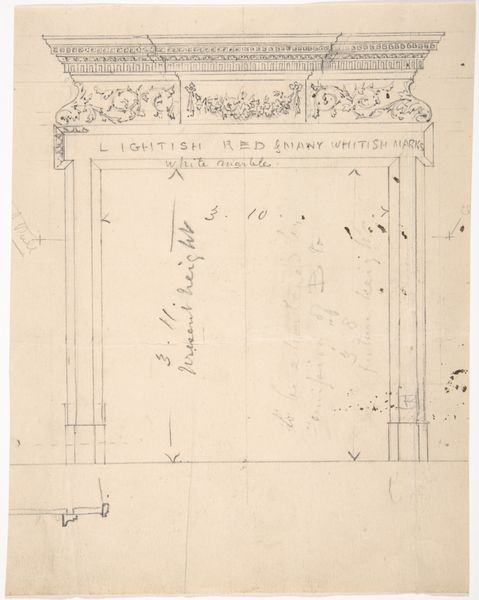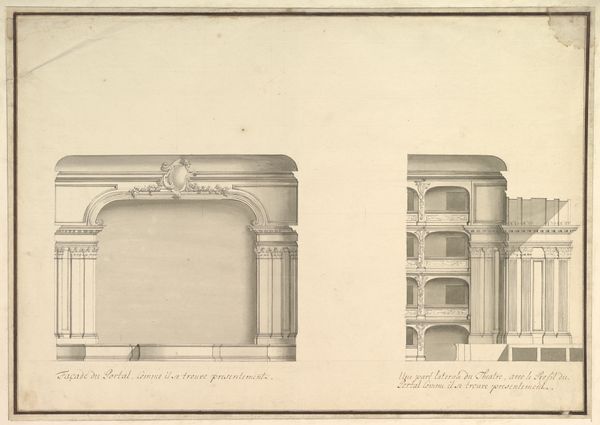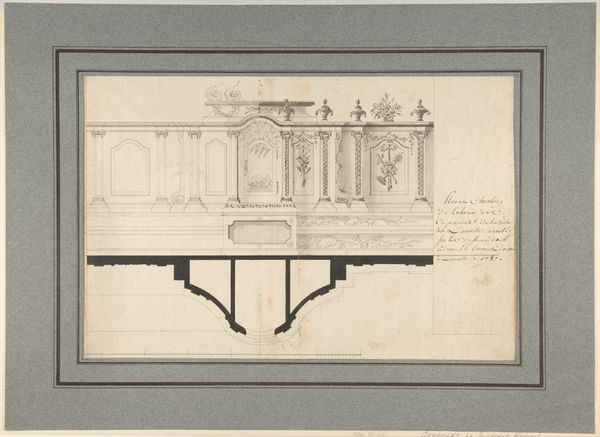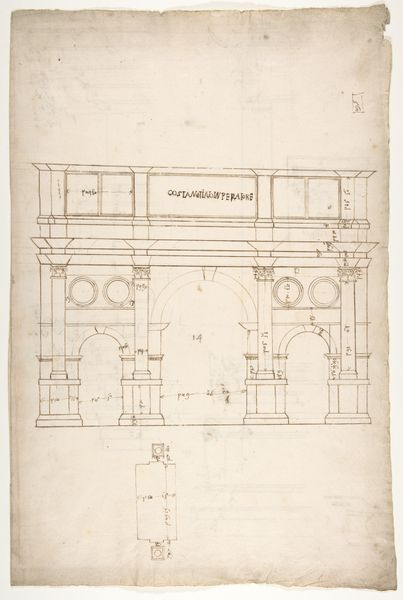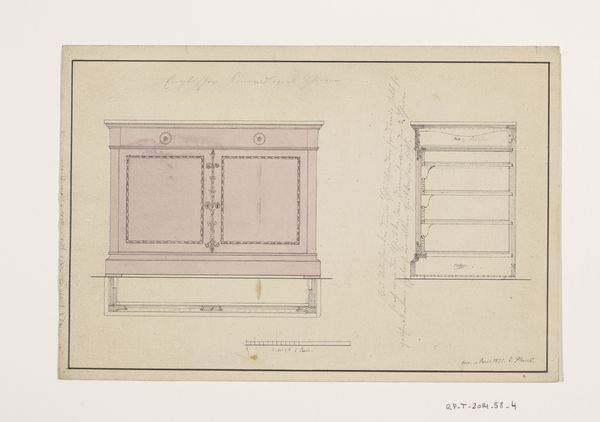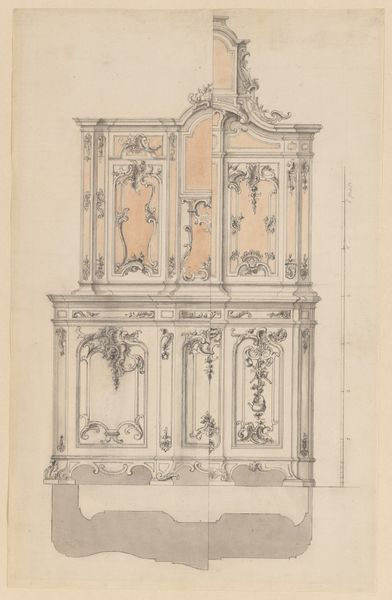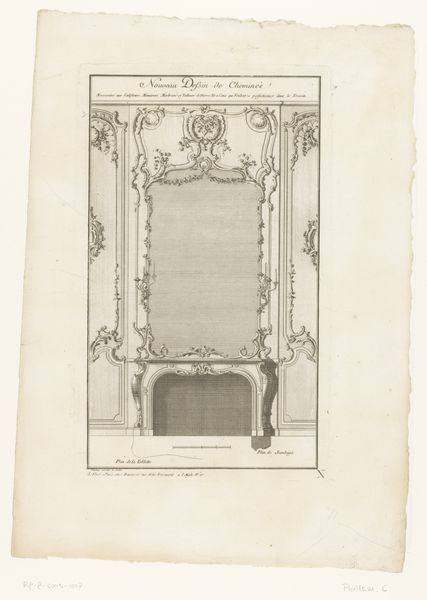
Design for an Altar and Choir Grill, Abbey at Rebais 1750 - 1799
0:00
0:00
drawing, print, etching, architecture
#
drawing
#
neoclacissism
# print
#
etching
#
classical-realism
#
etching
#
architecture
Dimensions: 13 5/16 x 8 9/16 in. (33.8 x 21.8 cm)
Copyright: Public Domain
Curator: Looking at "Design for an Altar and Choir Grill, Abbey at Rebais," created between 1750 and 1799 by Claude Louis D'Aviler, we're presented with an intriguing example of neoclassical architectural design rendered in drawing, etching, and print media. Its current home is the Metropolitan Museum of Art. Editor: My first thought? It’s all about meticulous order but, like, in a good way. Everything’s neatly defined, very architectural, but still has that hand-drawn, delicate feel, you know? Almost feels… hopeful. Curator: I'm drawn to the context. Neoclassicism was more than a style; it reflected Enlightenment ideals of reason and order. Structures like this altar, especially in the charged space of an abbey, were statements of power— both divine and, importantly, human power expressed through architectural control. How would you situate this design, perhaps, within a religious framework or a broader context of sociopolitical shifts? Editor: Religious framework? Absolutely. But I also can't shake the feeling that, beyond the altar, there’s something incredibly staged. It’s designed for viewing, for performance, not just for piety. The layout even, with the separate elevated spaces, it makes me consider how power literally resides on multiple levels. The etching looks cold on the page, like the rationality is killing its spirit, but I think the church needs this rationality too. It's all about seeing the structure— physical and theoretical. Curator: Precisely. It is not just an image of religious devotion but an assertion of control during the late 18th century. The altar grill subtly enforced a separation of roles, reinforcing a liturgical and societal hierarchy, perhaps in the face of revolutionary impulses threatening established power structures. Editor: Ah, it really gives off a “look but don’t touch” kinda vibe, huh? It is absolutely wild thinking of that level of careful staging. I bet in its time period there were other ways the building reinforced other societal rules. So glad we have pieces like this to tell us the stories now! Curator: Agreed, and this work, far from being a static object, invites us to interrogate these historical dynamics of religion, society, and art, acknowledging its echoes in contemporary contexts where the performance of power and belief continues to shape our realities. Editor: So cool to look at and knowing some things and connecting things makes me even happier.
Comments
No comments
Be the first to comment and join the conversation on the ultimate creative platform.

